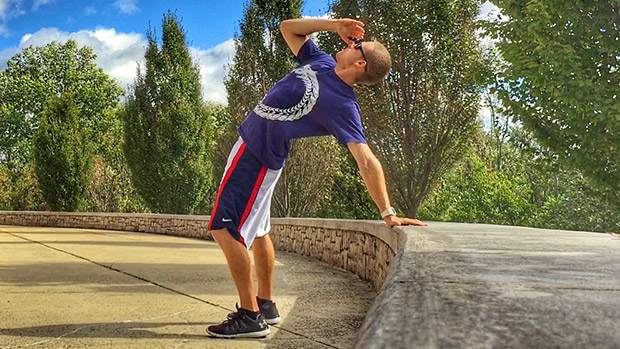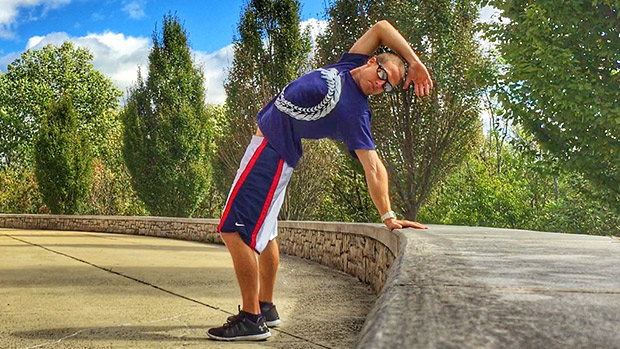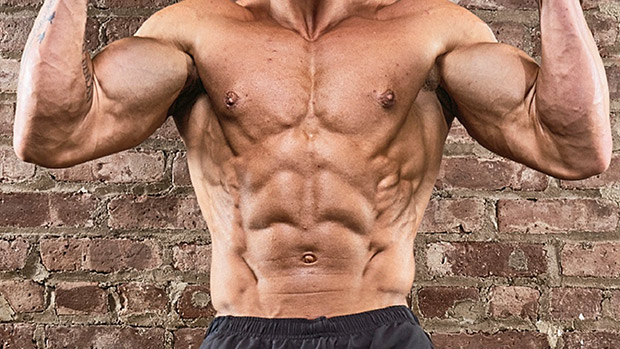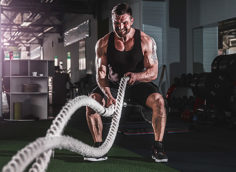If you're not challenging yourself regularly, you could be leaving some extra gains on the table, especially when it comes to structural integrity. Challenges expose weaknesses, build mettle, and (if you're like most semi-masochistic lifters) they're fun.
While there are all types of athletic benchmarks out there – like doing a bodyweight bench press, running a mile in under 6 minutes, or hitting 100-reps of anything – they often overlook some big factors that contribute to your relative strength, speed, and endurance. And indirectly, these factors may also contribute to your appearance, lack of gains, or any forthcoming injuries.
Here are five challenges that'll measure and improve your mobility, functionality, and physique.
Activations are like hitting reset on your whole body. It's a learning experience too. You can assess your body's global stability prior to making exercise selections and adding external loads during your regular workouts.
The idea is to practice activations in a progressive manner to expose communication "errors" along your kinetic chain(s). This is done by adding or removing contact points, accordingly, to determine which area of the body is the limiting factor.
Start on all fours, shoulders above hands, hips above knees, and knees an inch above the ground. Lift your right foot and left hand an inch above the ground and hold for a few seconds. Repeat on the other side.
You can practice this any time of the day, but it's even better if you add it to the beginning of your workout once a week. Here's an example of how you might check in with your body before checking out with tons of reps/volume:
- Static beast (not lifting hands) x 60 seconds
- Contralateral limb lift (one-arm) x 15 seconds (each side)
If you're struggling with these, modify by practicing them with your hands on a knee or waist level surface instead.
The ability to balance on one leg is a key marker for hip stability. If you've ever experienced pain in your lower back or legs (not related to a traumatic injury) you can potentially save yourself some money in X-rays, MRIs, and even surgeries by diagnosing with a mirror or video. You can usually spot any biomechanically dysfunctional postures from the ground up with this challenge.
The most obvious example would be that it will feel easier balancing on one side than the other, but also check for any swaying of the hips or collapsing of the ankles (i.e. compensations) that occur while trying to maintain an anatomical neutral position.
Then address these issues with mobility work, unilateral training, and aerobic conditioning with exercises that allow you to keep intensity as high as possible without interfering with your postural alignment. You can do these anytime and anywhere. Here's what this looks like:
- Eyes open x 30 seconds (each side)
- Eyes closed x 15 seconds (each side)
If you're struggling with these, take a step back and practice them with your hands on an object. Then work toward just one hand on the object, and then just one finger until you're completely free.
The backbend is one of the best ways of building strength and flexibility simultaneously along the posterior chain. The thoracic extension and spinal articulation will absolutely improve your mobility and performance while practicing every other exercise in existence.
If you work out in the afternoon, use this in the beginning of your workout. If you train in the morning, use this at the very end of your workout, when your core temperature is highest.
When you emphasize your breathing while going into and out of this extreme position, you'll also notice an improvement in your lung power and capacity during following workouts. Here's one of the best examples of challenging your posterior chain with minimal equipment:
- Wall crawl x 2 reps (be able to go into and out of from both sides)
- Stand-to-stand bridge x 1-3 reps
Struggling? Ease up and practice the wall version with a waist or knee-level box behind you as the finishing position for your hands. Another way to practice going into and out of the bridge would be on the ground or a higher platform from the crab reach position:


Scapular strength is probably the single most important precursor to having bulletproof shoulders. It's a challenge just to be able to take your shoulder joints through a full circle in both directions while performing any upper body move.
Taking this one step further, check for your shoulder (and core) strength potential with an active hang. This isn't a "dead" hang." Instead, keep your lats and shoulder blades engaged to pack the shoulders into their sockets.
You're basically looking for any excessive swinging (more obvious) and tendencies to bend the arms (less obvious), which will provide you with some clues as to where the weak links are in your system.
This challenge would make an excellent addition to any warm-up or active recovery day. Here's what this looks like:
- Both arms x 60 seconds
- One arm x 15 seconds (each side)
If you're struggling with these, modify them by putting your feet on an object for assistance (or with your feet on the ground in a Smith machine setup), working towards just one foot until you're completely free.
The credit for this challenge goes to Dr. John Rusin, who basically wants you to rethink the barbell squat if you're not ready for it. This challenge will expose weak links in the core, hips, shoulders, and lower extremities as far as their stability and overall coordination are concerned.
It's a good workout in itself and can be practiced by following these rules:
- Grab a dumbbell or kettlebell that weighs 50 percent of your current bodyweight.
- Reach parallel depth with each squat.
- Avoid ugly compensations with the spine, shoulders, hips, and feet. Stay as symmetrical and tight as possible.
- Complete as many unbroken reps as possible with minimal rest in between.
- If your form starts to break down, stop.
While I mostly do calisthenics during my own training these days, you'll see that I managed to do this loaded challenge with minimal technical breakdown.
If you're struggling with this, modify by using less weight, or use the same load and split up your volume until you hit 25 reps, working toward being able to do them all in one set.
Master these and you'll own more of your reps, stay stronger throughout the whole range of motion, and blast through plateaus.




